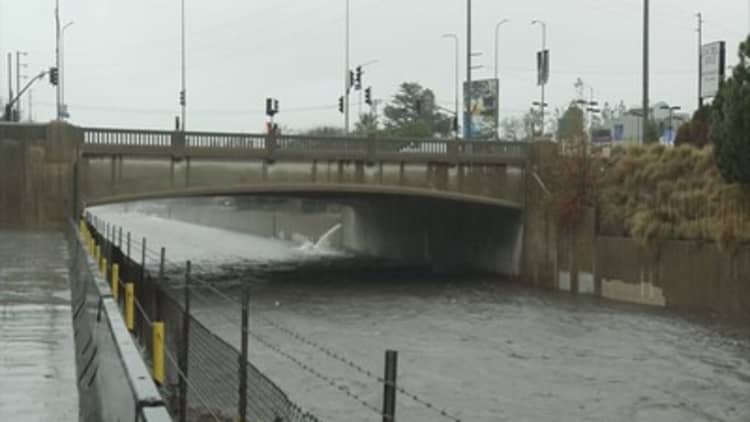This year's El Nino climate phenomenon is likely to leave some of its strongest marks on North America this winter and early spring, according to the most recent forecast issued by the Climate Prediction Center at the National Weather Service.
Temperatures in the Pacific Ocean may have already peaked and are showing signs of cooling, which would indicate that the ongoing El Nino has already reached its apex. Warmer water indicates a stronger El Nino.
"We have just entered the period where we see peak impacts over North America," said Mike Halpert, deputy director of the Climate Prediction Center.
Halpert told reporters on a call Thursday that "the current El Nino will remain strong through through the winter, gradually weakening through the spring," before transitioning to neutral conditions during the late spring or early summer.
The current CPC forecast favors above-normal precipitation across all of the southern U.S., from California to the East Coast. Warmer-than-normal temperatures are likely in Alaska, the western states, and the most of the northern half of the country. Chances are that the only exceptionally cold regions will be the southern plains and the Southeast.

Halpert warned, though, that "we don't, and you really shouldn't attribute, any one storm system to El Nino."
Unusual weather — such as recent flooding along the Mississippi River and in the Pacific Northwest — are not typical of El Nino patterns, which illustrates the complexity of the climate system overall and the unique character of each El Nino.
The official metric the CPC uses to track El Nino is the Oceanic Nino Index, which tracks sea surface temperatures in the Pacific Ocean. This year's El Nino ONI readings are roughly equal to temperatures from the 1997-98 El Nino, making it one of the strongest ever recorded.
That El Nino from the late '90s brought a small but measurable boost to GDP of between 0.2 percent and 0.5 percent, according to a report released by economic research firm IHS Global Insight on Wednesday. The report calls for similar effects this time around.

The climate pattern's effects in one area or industry can be severe, but they are often offset in one way or another by effects elsewhere. For example, bad weather has damaged crops and decimated livestock in Texas and New Mexico, but wetter weather is delivering much-needed rain to California and other exceptionally dry areas.
In the Northeast, homes may be using less heating oil, and with crude prices already at lows for the last decade, that could create a "two-for-the-price-of-one" effect, the report noted. But that same dip can slow energy production.
A milder winter in some regions could bring more consumers out to stores and restaurants, especially in the Northeast. But that is likely to be offset by dips elsewhere, such as lower online retail sales or fewer sales of winter clothing, snowmobiles and ski-lift tickets.


